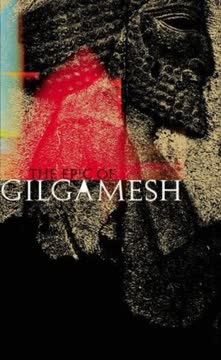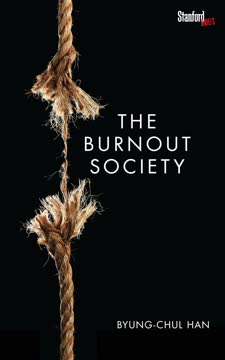Key Takeaways
1. The East's Fragile State Invited Western Intervention
Indeed, no human agency could have stopped the disruptive movements in the eastern provinces of Rome.
Internal strife. The Byzantine Empire, once a bastion of power, was weakened by internal religious disputes, economic decline, and the rise of a powerful land-owning aristocracy. These factors created a power vacuum in the East, making it vulnerable to external forces.
- Religious heresies like Monophysitism and Nestorianism divided the Christian population.
- Constant wars with Persia and the Arabs drained resources and manpower.
- The rise of a wealthy land-owning class undermined the central government.
External pressures. The rise of the Seldjuk Turks, who had converted to Islam, posed a significant threat to the Byzantine Empire and the broader Christian world. Their westward expansion disrupted trade routes and led to the loss of key territories.
- The Battle of Manzikert in 1071 was a devastating blow to Byzantine power.
- Turkish incursions into Anatolia displaced populations and disrupted the economy.
- The fall of Jerusalem to the Turks in 1071 shocked the Christian world.
A perfect storm. The combination of internal weakness and external threats created a perfect storm that invited intervention from the West. The East's vulnerability became the West's opportunity, setting the stage for the Crusades.
2. Religious Zeal Fueled the Crusader Movement
‘Glory be to God, Who has conquered the Saracens.’
Holy war. The concept of a holy war, where fighting for the faith was seen as a meritorious act, gained traction in the West. The Church actively promoted the idea that fighting against the infidel was a way to earn salvation and forgiveness for sins.
- The idea of a holy war was not new, but it was given new impetus by the Crusades.
- The Church offered indulgences and remission of sins to those who participated.
- The concept of martyrdom was extended to those who died fighting for the Cross.
Peace movements. The Church also sought to channel the violence of the knightly class into a more constructive direction. The Peace of God and the Truce of God movements aimed to limit warfare among Christians, but also encouraged fighting against non-Christians.
- The Peace of God sought to protect the clergy and the poor from violence.
- The Truce of God limited warfare on holy days.
- These movements helped to create a climate where fighting for the faith was seen as a positive act.
Spiritual rewards. The promise of spiritual rewards, such as absolution and a place in heaven, was a powerful motivator for many Crusaders. The desire to visit the holy places and to be in the presence of God was a strong force that drove the movement.
3. Pilgrimages Paved the Way for the Crusades
‘Our feet shall stand within thy gates, O Jerusalem.’
Spiritual journeys. The practice of pilgrimage to holy sites, particularly Jerusalem, had been a long-standing tradition in Christianity. These journeys were seen as a way to connect with the divine and to gain spiritual merit.
- Early pilgrimages were rare, but they grew in popularity after the triumph of Christianity.
- The discovery of relics and the building of churches in the Holy Land attracted more pilgrims.
- Pilgrimages were seen as acts of faith and devotion.
Cultural exchange. Pilgrimages facilitated cultural exchange between the East and the West. Western Christians learned about the holy places and the cultures of the East, while eastern Christians were exposed to the traditions of the West.
- Pilgrims brought back relics and stories of the East.
- Merchants and traders also played a role in cultural exchange.
- This exchange helped to create a sense of connection between the two worlds.
Preparation for war. The infrastructure developed to support pilgrimages, such as hostels and trade routes, also facilitated the movement of armies. The desire to visit the holy places was transformed into a desire to liberate them, paving the way for the Crusades.
4. Byzantine Weakness Created Opportunity and Peril
‘In prosperity the destroyer shall come’
Internal decay. The Byzantine Empire, despite its outward appearance of strength, was suffering from internal decay. The loss of its agrarian base, the rise of a powerful aristocracy, and the weakness of its emperors made it vulnerable to external threats.
- The system of free peasants was undermined by the growth of large estates.
- The military aristocracy challenged the authority of the central government.
- The emperors were often weak and ineffective.
Norman threat. The rise of the Normans in southern Italy posed a serious threat to Byzantine power in the West. Their conquest of Byzantine territories and their ambition to expand eastward created a new enemy for the Empire.
- The Normans were skilled warriors and ambitious adventurers.
- Their conquest of southern Italy threatened Byzantine control of the Adriatic.
- Their ambition extended to the East, making them a potential threat to Constantinople.
A desperate plea. Faced with these threats, the Byzantine Emperor Alexius Comnenus appealed to the West for help. His plea, though intended to secure mercenaries, inadvertently unleashed the forces that would lead to the Crusades.
5. The People's Crusade: Faith Without Discipline
‘We looked for peace, but no good came’
Unorganized fervor. The People's Crusade, led by figures like Peter the Hermit, was a spontaneous and largely unorganized movement of common people driven by religious zeal. It lacked the discipline and resources necessary for a successful military campaign.
- Peter the Hermit was a charismatic preacher who inspired thousands to join the Crusade.
- The People's Crusade was composed of peasants, townsfolk, and even women and children.
- It lacked a clear leadership structure and military organization.
Disastrous journey. The journey of the People's Crusade was marked by violence, pillaging, and ultimately, disaster. The Crusaders, lacking supplies and discipline, often resorted to violence against both Christians and non-Christians.
- They attacked Jewish communities in the Rhineland.
- They pillaged and destroyed villages in Hungary and the Balkans.
- They were ultimately defeated by the Turks in Asia Minor.
A cautionary tale. The People's Crusade serves as a cautionary tale about the dangers of religious zeal without discipline and organization. It highlighted the need for strong leadership and a clear strategy for a successful military campaign.
6. Princes and Power: The First Organized Crusades
‘By me kings reign, and princes decree justice’
Noble leadership. The first organized Crusades were led by powerful nobles and princes from Western Europe, such as Godfrey of Bouillon, Raymond of Toulouse, and Bohemond of Taranto. These leaders brought with them their own armies and resources.
- These leaders were motivated by a combination of religious zeal, ambition, and the desire for land and wealth.
- They were experienced military commanders and skilled politicians.
- Their participation gave the Crusades a more organized and effective structure.
Political maneuvering. The Crusades were not solely driven by religious motives. The princes also engaged in political maneuvering, seeking to expand their own power and influence in the East.
- They sought to establish their own principalities in the Holy Land.
- They often clashed with each other over territory and resources.
- Their political ambitions often undermined the unity of the Crusader movement.
Byzantine diplomacy. The Byzantine Emperor Alexius Comnenus sought to use the Crusades to his own advantage, hoping to regain lost territories and to secure his borders. He demanded oaths of allegiance from the Crusader leaders, but his efforts were often met with suspicion and resistance.
7. Antioch: A City Won, A Cause Divided
‘In prosperity the destroyer shall come’
Strategic importance. The city of Antioch was a major strategic objective for the Crusaders. Its capture was essential for securing their supply lines and for advancing further into the Holy Land.
- Antioch was a major city with strong fortifications.
- It controlled key trade routes and access to the interior of Syria.
- Its capture was a major victory for the Crusaders.
Internal conflict. The capture of Antioch, however, also led to internal conflict among the Crusader leaders. Bohemond of Taranto, who had played a key role in the city's capture, sought to claim it for himself, while Raymond of Toulouse and others argued that it should be returned to the Byzantine Empire.
- Bohemond's ambition and treachery led to a division among the Crusaders.
- The dispute over Antioch undermined the unity of the Crusader movement.
- The city became a symbol of the political and personal rivalries that plagued the Crusade.
A turning point. The events at Antioch marked a turning point in the Crusade. The initial unity of purpose was shattered, and the focus shifted from the liberation of the Holy Land to the pursuit of personal gain.
8. Jerusalem: The Ultimate Goal, A Bloody Conquest
‘Our desire was to free the Holy Sepulchre from the outrages of the Moslems’
The final objective. Jerusalem was the ultimate goal of the Crusades. Its capture was seen as the culmination of the entire movement and the fulfillment of their religious vows.
- Jerusalem was the holiest city in Christendom.
- Its liberation was seen as a divine mandate.
- The Crusaders were willing to endure great hardships to reach it.
A brutal siege. The siege of Jerusalem was a brutal and bloody affair. The Crusaders, driven by religious fervor and desperation, fought with great ferocity.
- The city was heavily fortified and well-defended.
- The Crusaders suffered from hunger, thirst, and disease.
- The final assault was marked by a horrific massacre of the city's inhabitants.
A hollow victory. The capture of Jerusalem, though a major victory for the Crusaders, was also a hollow one. The violence and bloodshed that accompanied it left a lasting stain on the Crusader movement.
9. The Aftermath: A Fragile Kingdom and Lasting Scars
‘Yea, though they have hired among the nations, now will I gather them, and they shall sorrow a little for the burden of the king of princes.’
A new kingdom. The capture of Jerusalem led to the establishment of a new Crusader kingdom in the Holy Land. Godfrey of Bouillon was chosen as its first ruler, but he refused the title of king, preferring to be known as the Defender of the Holy Sepulchre.
- The kingdom was a fragile entity, surrounded by hostile forces.
- It was plagued by internal divisions and political rivalries.
- It was dependent on the support of the West for its survival.
Lasting divisions. The Crusades left a lasting legacy of division and mistrust between the East and the West. The violence and brutality of the Crusades created a deep sense of resentment among the Moslems, while the Byzantines felt betrayed by the actions of the Franks.
- The massacre at Jerusalem was a major turning point in the relations between Christians and Moslems.
- The Crusades contributed to the growing schism between the Eastern and Western Churches.
- The legacy of the Crusades continues to shape the political and cultural landscape of the Middle East.
A complex legacy. The Crusades were a complex and multifaceted event with a lasting impact on the world. They were driven by religious zeal, political ambition, and the desire for wealth and power. Their legacy is one of both triumph and tragedy, of faith and violence, of unity and division.
Last updated:
FAQ
1. What is A History of the Crusades, Volume 1 by Steven Runciman about?
- Comprehensive account of the First Crusade: The book provides a detailed narrative of the First Crusade, from its origins in the eleventh century to the establishment of the Kingdom of Jerusalem.
- East-West interactions: Runciman emphasizes the importance of understanding the Crusades from both Western and Eastern perspectives, including the roles of Byzantines, Muslims, and Eastern Christians.
- Blend of military, political, and religious history: The work covers military campaigns, political intrigues, religious motivations, and the creation of Crusader states in the Levant.
- Foundation for further study: This volume is the first in a trilogy, setting the stage for later Crusades and the evolution of the Crusader kingdoms.
2. Why should I read A History of the Crusades, Volume 1 by Steven Runciman?
- Authoritative and engaging narrative: Runciman is recognized for his scholarly rigor and storytelling, making complex events accessible and compelling.
- Balanced and nuanced perspective: The book avoids simplistic hero-villain dichotomies, presenting the Crusaders, Byzantines, and Muslims with depth and nuance.
- Insight into medieval mindsets: Readers gain an understanding of the religious fervor, cultural misunderstandings, and motivations that drove the Crusades.
- Valuable resource for all readers: With extensive notes, maps, and bibliography, it serves both general readers and scholars interested in medieval and religious history.
3. What are the key takeaways from A History of the Crusades, Volume 1 by Steven Runciman?
- Complexity of the Crusades: The Crusades were shaped by religious, political, and cultural factors, not just simple religious zeal.
- Interplay of faith and politics: Religious visions, relics, and church leaders played as significant a role as military tactics and political ambitions.
- Lasting impact on East-West relations: The Crusades deepened the schism between Latin and Greek Christianity and altered the balance of power in the Eastern Mediterranean.
- Challenges of Crusader rule: The establishment of Crusader states involved ongoing struggles with local populations, internal rivalries, and external threats.
4. What were the main causes and background of the First Crusade according to Steven Runciman?
- Religious and political turmoil: Disputes within Christianity, the decline of Byzantium, and the rise of Islam created a volatile environment in the East.
- Threats to Christian holy sites: The Arab and Turkish conquests of Jerusalem and surrounding regions endangered Christian access to holy places and pilgrimages.
- Western religious fervor: The growth of the idea of holy war, peace movements, and papal reforms channeled knightly violence toward the Crusade.
- Byzantine appeals for help: The Byzantine Emperor’s request for Western aid against the Turks provided the immediate catalyst for the Crusade.
5. How does Steven Runciman describe the situation of Christians under Muslim rule before the First Crusade?
- Dhimmis and social restrictions: Christians and Jews were allowed to practice their faith but paid special taxes and faced social limitations under Muslim rule.
- Periods of tolerance and hardship: Early Muslim rulers were relatively tolerant, but later periods saw fluctuating policies, occasional persecutions, and economic challenges.
- Cultural assimilation: Many Christians adopted Arabic language and customs, and some heretical sects converted to Islam over time.
- Demographic shifts: Christian populations became concentrated in certain towns and regions, with their influence gradually declining.
6. What role did pilgrimage play in the lead-up to the First Crusade in A History of the Crusades, Volume 1?
- Longstanding Christian tradition: Pilgrimage to the Holy Land was a deeply rooted practice, especially after the discoveries and church-building by Helena, mother of Constantine.
- Increasing dangers and obstacles: After the Arab and Turkish conquests, pilgrimages became hazardous, with travelers facing harassment, taxation, and violence.
- Spiritual and political significance: Pilgrimage fostered a connection between Western Christendom and the East, and the protection of pilgrims became a rallying cause for the Crusade.
- Pretext for military intervention: The difficulties faced by pilgrims were used to justify the call for armed intervention to secure access to holy sites.
7. How does Steven Runciman explain the development of the concept of "Holy War" before the Crusades?
- Christian ambivalence toward war: Early Christian doctrine condemned war, but Western Christianity gradually developed the idea of just and holy war.
- Peace and Truce of God movements: The Church attempted to limit internal violence by restricting warfare on certain days and protecting noncombatants, though with limited success.
- Sanctioned wars against non-Christians: The Church began to offer spiritual rewards for fighting non-Christians, especially in Spain, setting a precedent for the Crusades.
- Papal encouragement: Popes like Alexander II and Gregory VII promoted campaigns against the infidel, paving the way for the First Crusade.
8. What were the main ecclesiastical and political tensions between Rome and Constantinople before the First Crusade, according to Runciman?
- Competing patriarchates: The patriarchates of Rome and Constantinople vied for spiritual supremacy, with overlapping claims and rivalries.
- Doctrinal and ritual disputes: Issues such as the filioque clause, clerical celibacy, and liturgical differences fueled friction between East and West.
- Papal reforms and ambitions: The reforming Papacy sought to standardize practices and assert authority over the Eastern Church, which Constantinople resisted.
- Schism and ongoing diplomacy: The 1054 excommunications deepened divisions, but diplomatic efforts continued until the Crusades intensified the schism.
9. How did Pope Urban II initiate the First Crusade in A History of the Crusades, Volume 1?
- Council of Clermont (1095): Urban II called a council and delivered a rousing appeal to Western Christians to aid the East and reclaim Jerusalem.
- Promise of spiritual rewards: He offered remission of sins to those who took up the cross, inspiring widespread enthusiasm.
- Organizational measures: Urban appointed Adhemar of Le Puy as papal legate, set rules for the Crusade, and sought to maintain Church control over the movement.
- Coordination with Byzantium: He aimed to secure cooperation with the Byzantine Emperor, though mutual suspicion persisted.
10. What were the main military campaigns and events of the First Crusade as described by Steven Runciman?
- Siege and capture of Nicaea: The Crusaders, aided by Byzantines, besieged and captured Nicaea, though the city was surrendered to Byzantium, causing resentment.
- Battle and siege of Antioch: The prolonged siege of Antioch involved famine, treachery, and the eventual defeat of a large Muslim relief army, securing a key stronghold.
- Siege and conquest of Jerusalem: The Crusaders endured harsh conditions to capture Jerusalem in 1099, resulting in the massacre of many Muslim and Jewish inhabitants.
- Founding of Crusader states: Victories led to the establishment of principalities like Edessa, Antioch, and the Kingdom of Jerusalem.
11. Who were the key leaders in the First Crusade according to A History of the Crusades, Volume 1, and what roles did they play?
- Bohemond of Taranto: A Norman leader instrumental in capturing Antioch and establishing himself as Prince of Antioch, often clashing with other leaders and Byzantines.
- Raymond of Toulouse: The wealthiest and eldest leader, known for his piety and ambition, involved in disputes over territory and leadership.
- Godfrey of Lorraine: Revered for his modesty and piety, he became the first ruler of Jerusalem, balancing secular and ecclesiastical interests.
- Baldwin of Boulogne: Founded the County of Edessa and later became King of Jerusalem, demonstrating political skill and opportunism.
12. How did religious visions and relics influence the First Crusade, according to Steven Runciman?
- Visions as morale boosters: Claims of visions, such as Peter Bartholomew’s discovery of the Holy Lance, inspired hope and renewed faith among Crusaders.
- Controversy and skepticism: Church leaders like Adhemar of Le Puy were skeptical of such claims, and the authenticity of relics was hotly debated.
- Spiritual leadership and unity: The papal legate Adhemar played a crucial role in maintaining religious discipline, organizing fasts and prayers to sustain morale.
- Source of conflict and manipulation: Religious fervor was both a unifying force and a source of internal division, especially after Adhemar’s death.
Review Summary
A History of the Crusades, Volume 1 is widely regarded as a masterpiece of historical scholarship. Readers praise Runciman's engaging narrative style, comprehensive research, and balanced perspective. The book offers a detailed account of the First Crusade, including its origins, key figures, and major events. While some note the dated language and lack of maps, most appreciate Runciman's ability to bring the period to life. Critics highlight his sympathetic portrayal of Byzantium and less favorable view of Western crusaders. Overall, it's considered an essential read for those interested in medieval history.
A History of the Crusades Series
Similar Books









Download PDF
Download EPUB
.epub digital book format is ideal for reading ebooks on phones, tablets, and e-readers.






